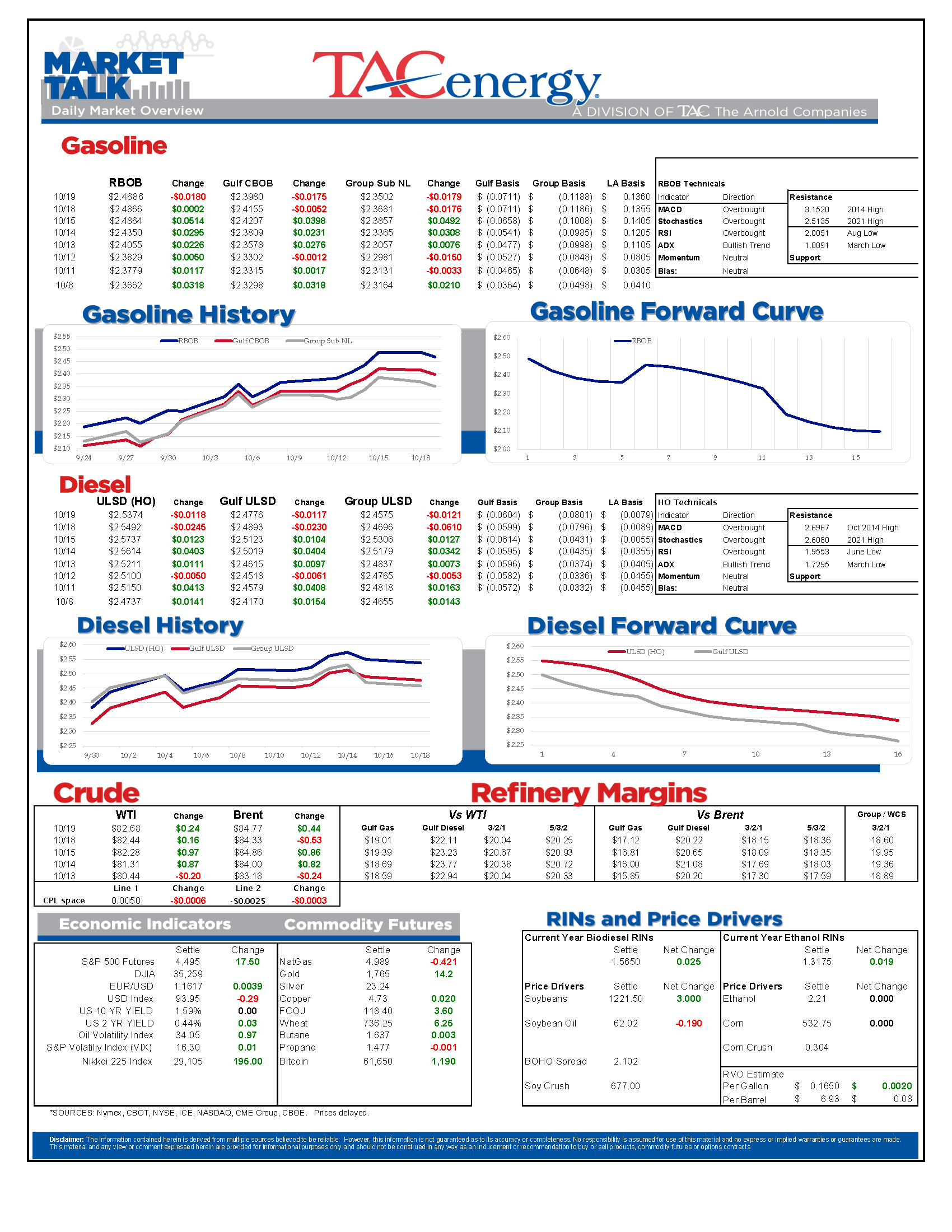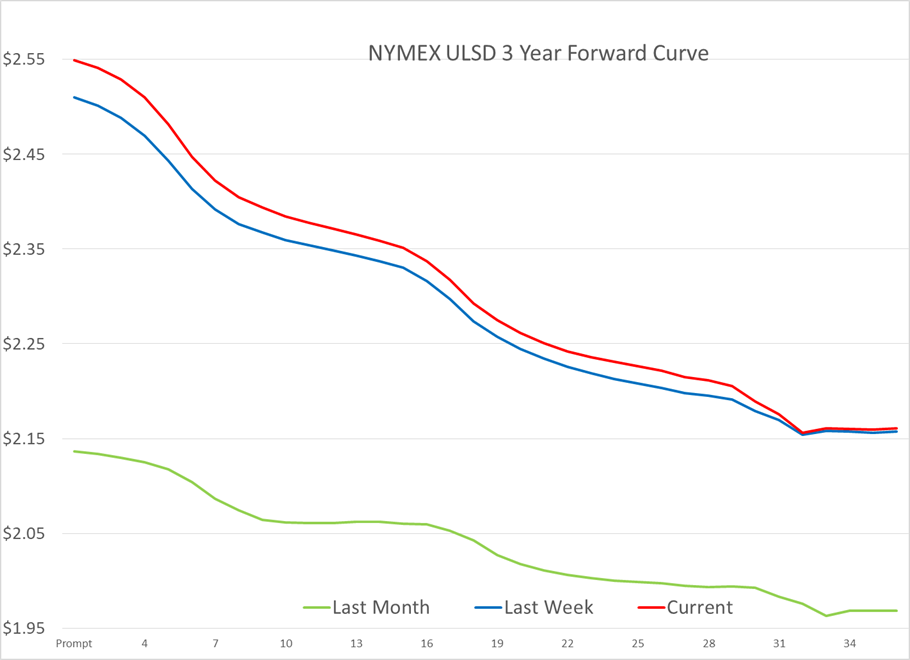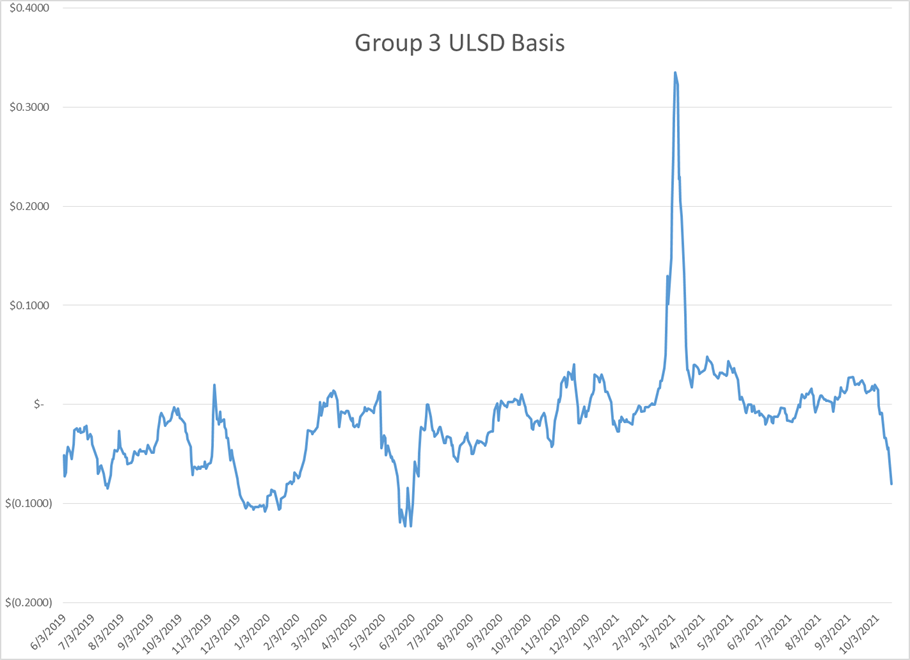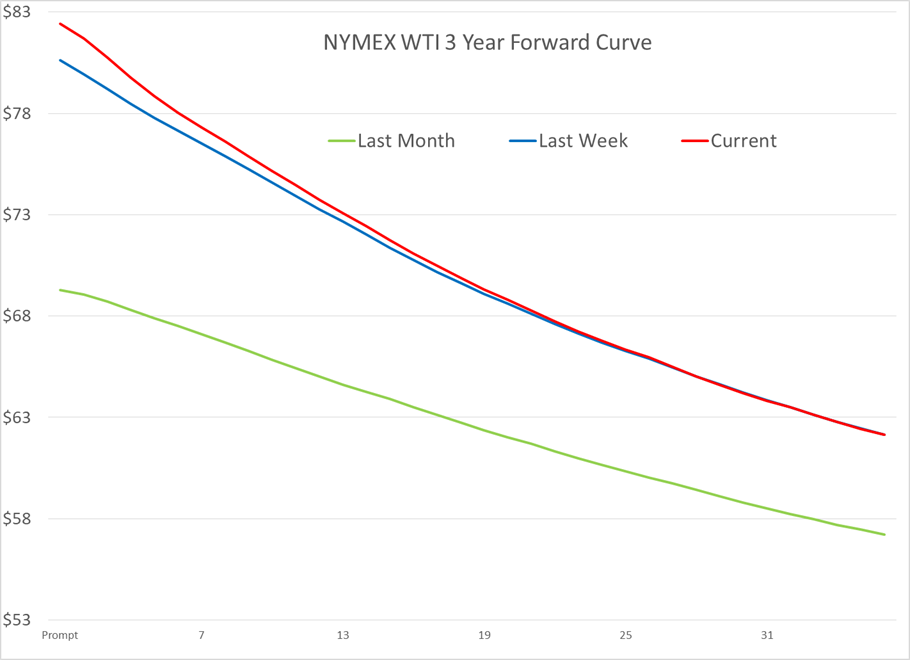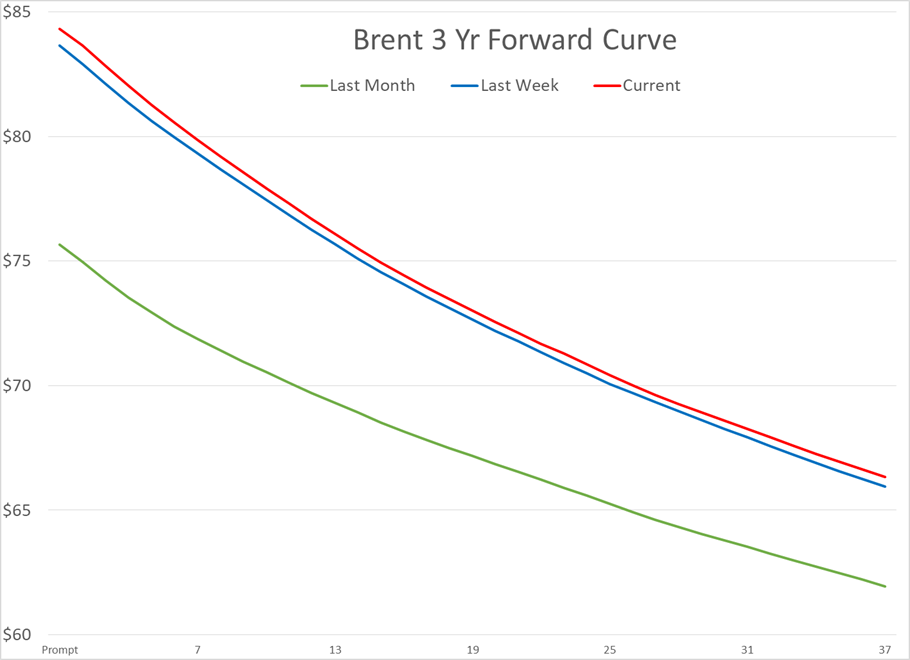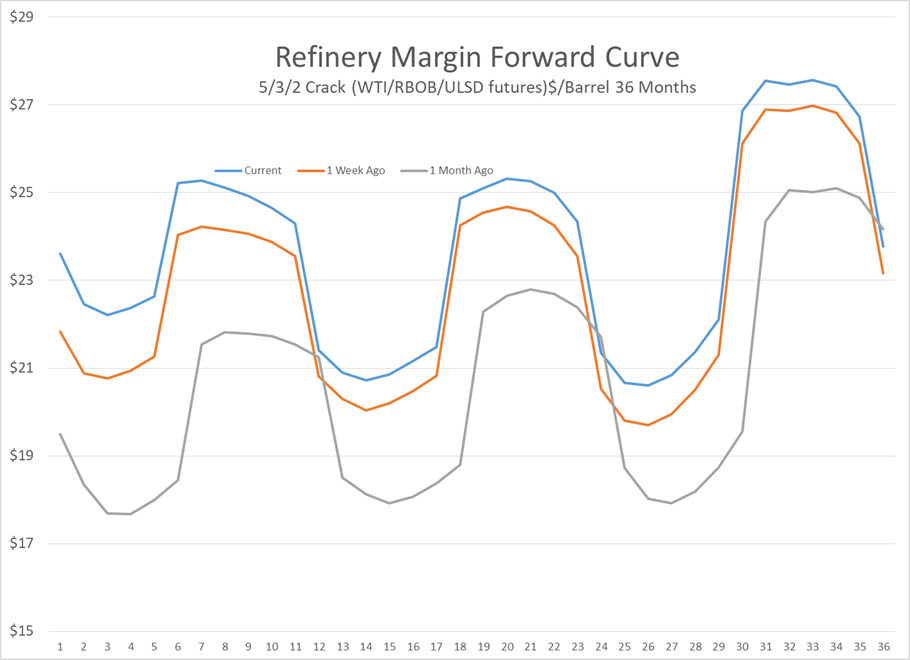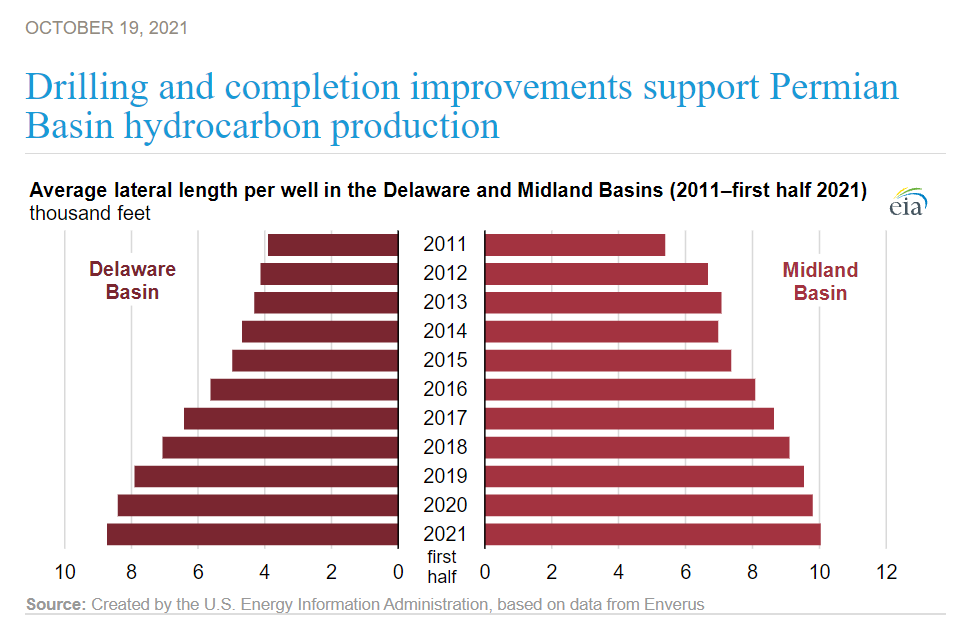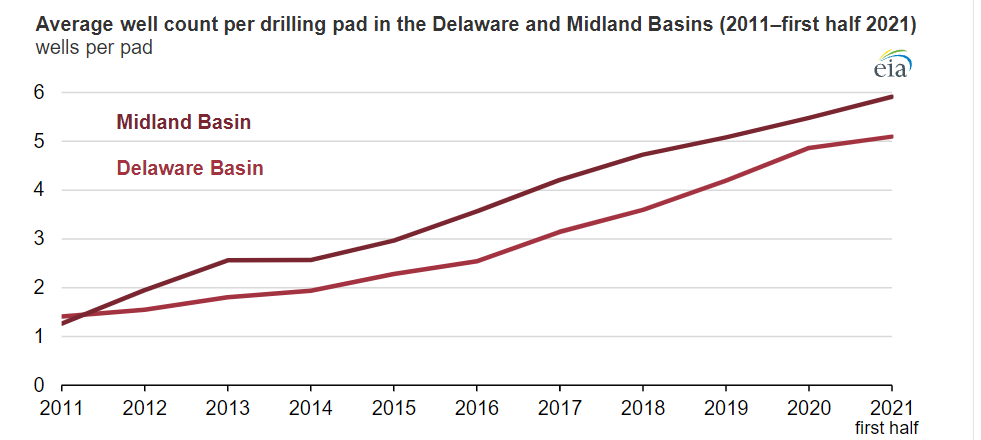Momentum Is Waning In Refined Product Markets

Momentum is waning in refined product markets this week after prices stalled out early Monday and are slipping modestly lower again this morning. While the pullback of 5-6 cents from the 7 year highs set early Monday morning are noteworthy, we’ll need to see prices drop another 7-8 cents in the coming days before they threaten the bullish trend lines that have been in place since the August pullback. In other words, so far this week’s selling looks more like a correction to an overbought market, rather than a reversal of that upward trend.
While refined products are struggling, both WTI and Brent are moving higher this morning, putting downward pressure on crack spreads. Unfortunately for refiners, there’s a double whammy on their margins this week as RIN values reached their highest settlement in nearly 6 weeks yesterday, even though RIN values and crack spreads often move in the same direction.
Keep an eye on calendar spreads this week, as severe backwardation in futures that’s steadily grown over the past month’s rally seems to be having strong influence on regional cash markets and inventory levels. What we’re seeing today in the RBOB market, with November prices down a penny more than February values, could be a sign of what’s to come once the supply squeeze has passed. For both ULSD and RBOB, we could see 5-10 cents price drops in front month values just to get the curve back to a more normal level.
This phenomenon is perhaps most glaring in the Group 3 diesel market, where basis values for ULSD dropped to 8 cents below futures, a level we’re used to seeing during the demand doldrums in winter, not during the peak of harvest season where we are today. The weakness in Midwestern diesel values seems to be trickling down to the gulf coast, as shippers will want to avoid moving barrels north to sell at a net loss, which should eventually correct the pricing mismatch.
An EIA report this morning highlights how improvements in drilling and well completion over the past decade allow for more oil to be produced in the Permian basin with lower costs. Meanwhile, the EIA’s monthly drilling rig report highlights that output per rig is forecast to drop slightly in the coming month as producers sacrifice efficiency during the restart race, but total output is expected to continue climbing along with the drilling rig count.
Click here to download a PDF of today's TACenergy Market Talk.
News & Views
View All
Energy Futures Are Caught Up In Headline Tug-O-War This Morning
Energy futures are caught up in headline tug-o-war this morning with Canadian oil production concerns and a positive US GDP report trying to push prices higher while sinking Chinese demand worries and Gaza ceasefire hopes are applying downward pressure. The latter two seem to be favored more so far this morning with WTI and Brent crude oil futures down ~45 cents per barrel, while gasoline and diesel prices are down about half a cent and two cents, respectively.
No news is good news? Chicago gasoline prices dropped nearly 30 cents yesterday, despite there not being any update on Exxon’s Joliet refinery after further damage was discovered Wednesday. Its tough to say if traders have realized the supply situation isn’t as bad as originally thought or if this historically volatile market is just being itself (aka ‘Chicago being Chicago’).
The rain isn’t letting up along the Texas Gulf Coast today and is forecasted to carry on through the weekend. While much of the greater Houston area is under flood watch, only two refineries are within the (more serious) flood warning area: Marathon’s Galveston Bay and Valero’s Texas City refineries. However, notification that more work is needed at Phillip’s 66 Borger refinery (up in the panhandle) is the only filing we’ve seen come through the TECQ, so far.
Premiums over the tariff on Colonial’s Line 1 (aka linespace value) returned to zero yesterday, and actually traded in the negatives, after its extended run of positive values atypical of this time of year. Line 1’s counterpart, Line 2, which carries distillates from Houston to Greensboro NC, has traded at a discount so far this year, due to the healthy, if not over-, supply of diesel along the eastern seaboard.
Click here to download a PDF of today's TACenergy Market Talk.

WTI And Brent Crude Oil Futures Are Trading ~$1.50 Per Barrel Lower In Pre-Market Trading
The across-the-board drawdown in national energy stockpiles, as reported by the Department of Energy yesterday, stoked bullish sentiment Wednesday and prompt month gasoline, diesel, and crude oil futures published gains on the day. Those gains are being given back this morning.
The surprise rate cut by the People’s Bank of China is being blamed for the selling we are seeing in energy markets this morning. While the interest rate drop in both short- and medium-term loans won’t likely affect energy prices outright, the concern lies in the overall economic health of the world’s second largest economy and crude oil consumer. Prompt month WTI and Brent crude oil futures are trading ~$1.50 per barrel lower in pre-market trading, gasoline and diesel are following suit, shaving off .0400-.0450 per gallon.
Chicagoland RBOB has maintained its 60-cent premium over New York prices through this morning and shows no sign of coming down any time soon. Quite the opposite in fact: the storm damage, which knocked Exxon Mobil’s Joliet refinery offline on 7/15, seems to be more extensive than initially thought, potentially extending the repair time and pushing back the expected return date.
There are three main refineries that feed the Chicago market, the impact from one of them shutting down abruptly can be seen in the charts derived from aforementioned data published by the DOE. Refinery throughput in PADD 2 dropped 183,000 barrels per day, driving gasoline stockpiles in the area down to a new 5-year seasonal low.
While it seems all is quiet on the Atlantic front (for now), America’s Refineryland is forecasted to receive non-stop rain and thunderstorms for the next four days. While it may not be as dramatic as a hurricane, flooding and power outages can shut down refineries, and cities for that matter, all the same, as we learned from Beryl.


